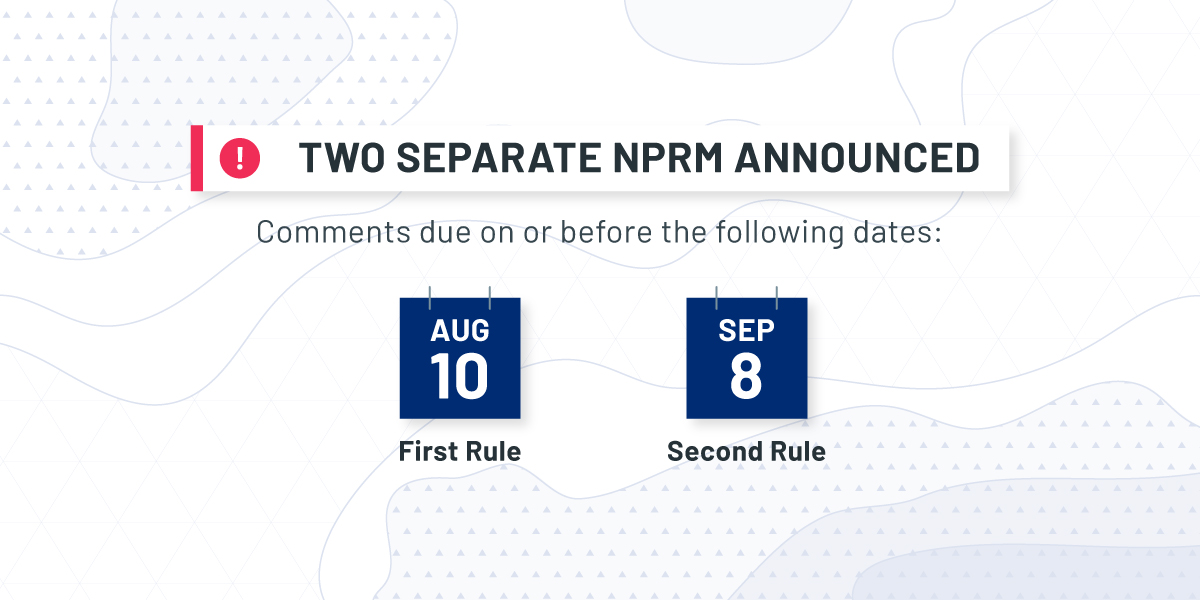Background
The current TILA/Reg Z ability-to-repay or ATR Rule (the Rule) requires a lender to make a reasonable, good faith determination of the borrower’s ability to repay the loan. The Rule includes a presumption of compliance for several categories of ‘qualified mortgage’ or ‘QM’ loans. One of the QM categories is for loans that are sold or eligible for sale to a government sponsored entity (GSE), meaning Fannie Mae or Freddie Mae. Because the Rule defines this category to expire on January 21, 2021 (or earlier in the unlikely event that the GSEs exit conservatorship before that date), this QM category is often called the Temporary GSE QM category, or the GSE Patch.
Importance of the Temporary GSE QM Category to the Industry
The Temporary GSE QM category under the current Rule gives QM protection to a large proportion of loans currently being made. These loans include conventional loans with a debt-to-income (DTI) ratio of 43% or greater, which the CFPB estimates to be almost one in six or conventional loans currently being originated. They also include conventional loans that meet GSE underwriting requirements, but not the more stringent ‘Appendix Q’ underwriting standards. Neither of these loan types would meet the current ‘General QM’ category definition. FHA loans currently permit DTI ratios above 43%, but the mortgage insurance and other costs inherent in FHA loans would likely materially raise the cost of the loan to the consumer. As a result, the CFPB’s actions indicate its understanding that the mortgage market needs the continued availability of a QM category that would include loans currently originated under the Temporary GSE QM category.
Extension of Sunset Date for Temporary GSE QM Category
The CFPB recognizes that the GSEs are not likely to come out of conservatorship before the Temporary GSE QM category expires. As a result, the first NPRM proposes to extend the sunset date of the Temporary GSE QM category from the current hard date of January 21, 2021 until the effective date of a final rule amending the General QM definition. The original intent of the sunset date when the Rule was enacted was that private investors would drive the development and acceptance of non-QM loan products that would replace this category. The CFPB’s action is an acknowledgment that private investors have not stepped in, and that GSEs still hold that market share. Without some adjustment to the QM category rules, if the current Temporary GSE QM category is allowed to expire, these loans will be more expensive for consumers, or might not be made at all.
Proposed Amendments to DTI Limit in General QM Category Definition
The second NPRM would amend the General QM category to replace the current 43% maximum DTI limit with a price-based definition. Specifically, a loan would meet the proposed General QM definition if its annual percentage rate (APR) exceeds the average prime offer rate for a comparable transaction (APOR) by less than 2%, with higher thresholds for smaller loan amounts and subordinate-lien loans. The current safe harbor/rebuttable presumption QM threshold of APR in excess of APOR by more than 1.5% would remain, although the CFPB requests comment on whether it should be adjusted. We think that the industry would support this price-based solution, because the APR/APOR calculation is currently part of standard loan origination processes, and yields a clear result on whether the loan meets requirements.
Although it is not part of the current proposal, the NPRM also requests comment on an alternative approach, which is to keep a DTI limit in the new General QM definition, but raise it to the 45-48% range and give more flexibility in evaluating consumer debt for underwriting purposes, as described in the section below.
Proposed Amendments to Other Underwriting Requirements in General QM Category Definition
This NPRM would also remove the current Appendix Q underwriting requirements from the General QM definition and replace them with more flexible requirements for how a lender considers a consumer’s income, assets and debts in determining the consumer’s ability to repay. The NPRM does not specify the verification standards to be used, but does indicate that ‘mixing and matching’ standards among documents used to verify income, assets and debt will be acceptable. The industry has criticized Appendix Q as problematic for evaluating certain borrowers, such as self-employed borrowers, so any relaxation of Appendix Q requirements would be welcome.
The proposed General QM definition would keep DTI as an element to consider in determining the borrower’s ability to repay, but it would no longer be subject to the current hard 43% limit. An additional flexibility in the proposal is that lenders would be able to consider either DTI or a calculated monthly residual income (the consumer’s total monthly income minus total monthly debts) in their determination. Residual income has always been an element in the ATR determination, but this would be its first appearance in the General QM definition. The CFPB’s determination is that DTI and residual income are strong indicators of ability to repay, and that giving lenders the ability to choose one in making an ATR determination would add flexibility while maintaining the underlying purpose of the ATR Rule.
The CFPB’s analysis of current loan delinquency indicates that the proposed rule may give safe-harbor QM status to some loans that are of higher risk than safe-harbor loans under the current rules, but that the early delinquency rate is ‘on par’ with that of safe harbor loans under the current Temporary GSE QM definition.
Comments on the first NPRM are due on or before August 10th, while comments on the second NPRM are due on or before September 8th.



